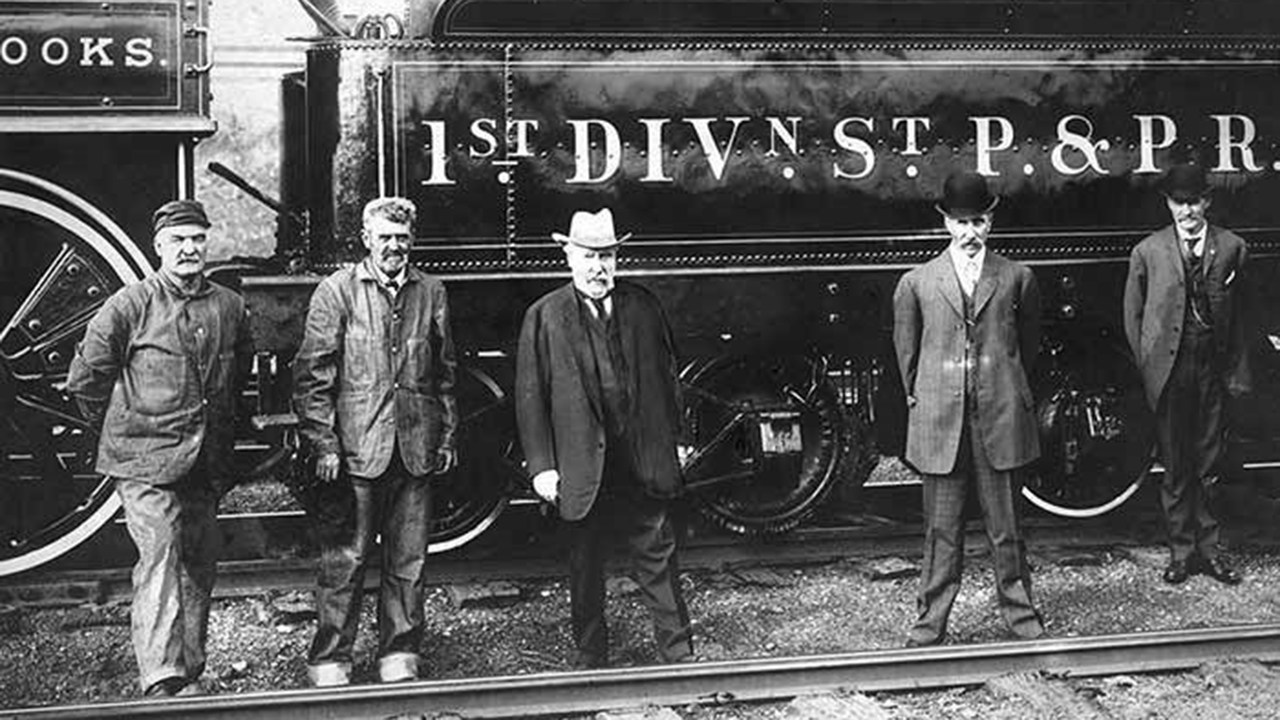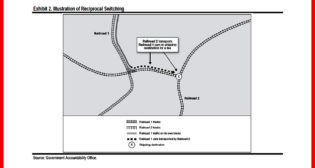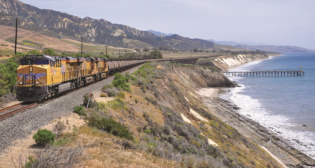
The Difference Between Leaders and Managers
Written by Michael E. McGinley, P.E.
James J. Hill, the “Empire Builder” (center).
I am a retired railroad civil engineer who started in 1966 and worked for the Southern Pacific, Southern California Regional Rail Authority and five consulting firms, plus three years in the U.S. Army. I still take an active interest in the industry as it has been my life’s work. I have been reading Railway Age since I found it in my college library in 1962.
Editor-in-Chief William C. Vantuono’s July 2023 article “Railroads at Midyear: In the Clear?” seems to be solely from the perspective of shareholders and share price. True, the mid-year appears tolerable for them and there are technical improvements in workplace safety and employee relations we can all appreciate. However, we continue to fail in several aspects of what true executive leadership would call “success.” Railroad market share continues to fall, public perception of the industry is poor, and apparently the only vision of the future is to maximize returns from whatever the market brings us.
Lately I have become a student of history, in particular railroad and military, and from that have come to believe there is a huge difference between leaders and managers. With very few exceptions, I see no modern railroad executives and officers who could measure up to the leadership examples of those who built the industry. My list of historic leaders includes Collis P. Huntington, Edward H. Harriman, James J. Hill and many more who built not only the nation’s infrastructure but also earned great returns for their investors. Admittedly each of them had flaws, but on the whole they had and shared a vision of how railroads were building the economy and society by growing into new markets (of both territorial and economic activity in scope).
I also firmly believe that capitalism has to be the fundamental basis for our economy, with the caveat that social legislation is essential to prevent harm to employees, the public, the environment, and in the end to themselves (as in blocking wild boom and bust cycles that cause massive business failures and hardship to all of our society). Capitalism thrives and expands with competition, yet investors abhor it and continually strive to eliminate it.
Some form of “open access” or sharing of the infrastructure is an opportunity to expand competition and to grow market share. I hope that railroad leaders can envision a business model where an independent company can bid on, and operate, local service along the main lines, freeing up the owners to run their specialty: large through trains that tolerate no exceptions to “the [operating] plan.” I can see where a responsible short line operator, with qualified equipment and crews, can be guaranteed a floating work window along the line to make small-lot pickups and setouts. For maintenance-of-way crews, I can even see this contractor delivering company materials as needed to support track and bridge work (as compared to the present situation where railroads contract much of this work to truck delivery in lieu of upsetting their “metrics” by breaking the rhythm of “the plan.”
It seems to me that senior officers of railroads are managers, not leaders. As guided by their incentive payments, their whole world is organized into obtaining the lowest cost to move the freight they assume will always be offered to them. This is the end game of business management’s ability to measure costs but not performance.
Leaders thrive by working with people. They listen, communicate, interact on the territory of their customers and employees, and set examples by living their values. Leaders enjoy time on the “shop floor.” “Management by walking around” is more about leadership than management. Managers thrive by manipulating numbers. Leadership can be messy and unpredictable, but it is flexible and can adjust to the future. Management can live almost entirely on paper, computer screens and meetings as it continues to try and improve upon the prior year’s performance.
Also, in reading history, I see how far our present industry has wandered from the common-carrier concept. When built, railroads were integrally linked to the whole (and in many places new) economy. Legislators encouraged this synergetic growth of population, business activity and territorial expansion with the bargain that public needs were being met. Of course, several aspects of the “retail” and small lot transportation have moved to faster, more flexible competitors. However, this still leaves vast markets that many railroads seem to shun because it upsets their efficiency metrics. Leaders should never forget their history, in this case the enormous benefits of being a common carrier.



